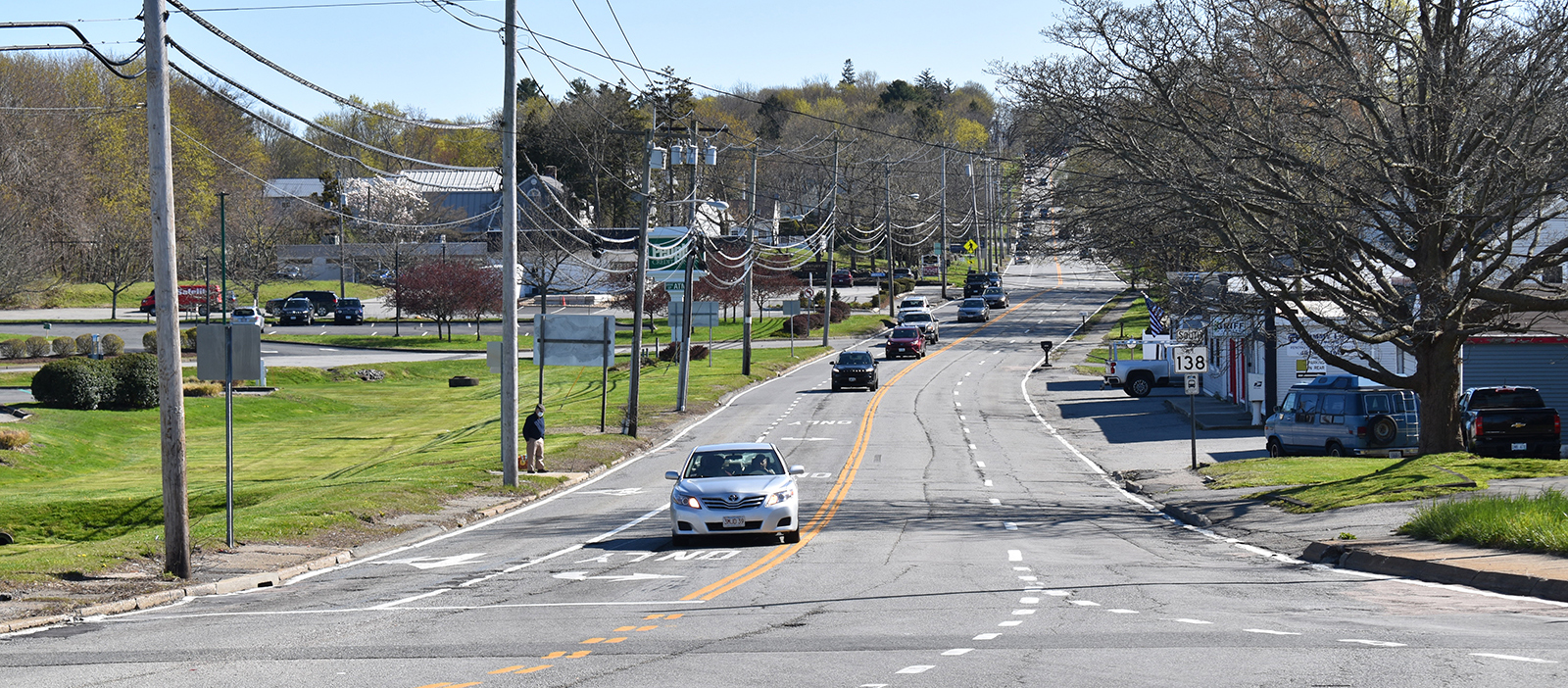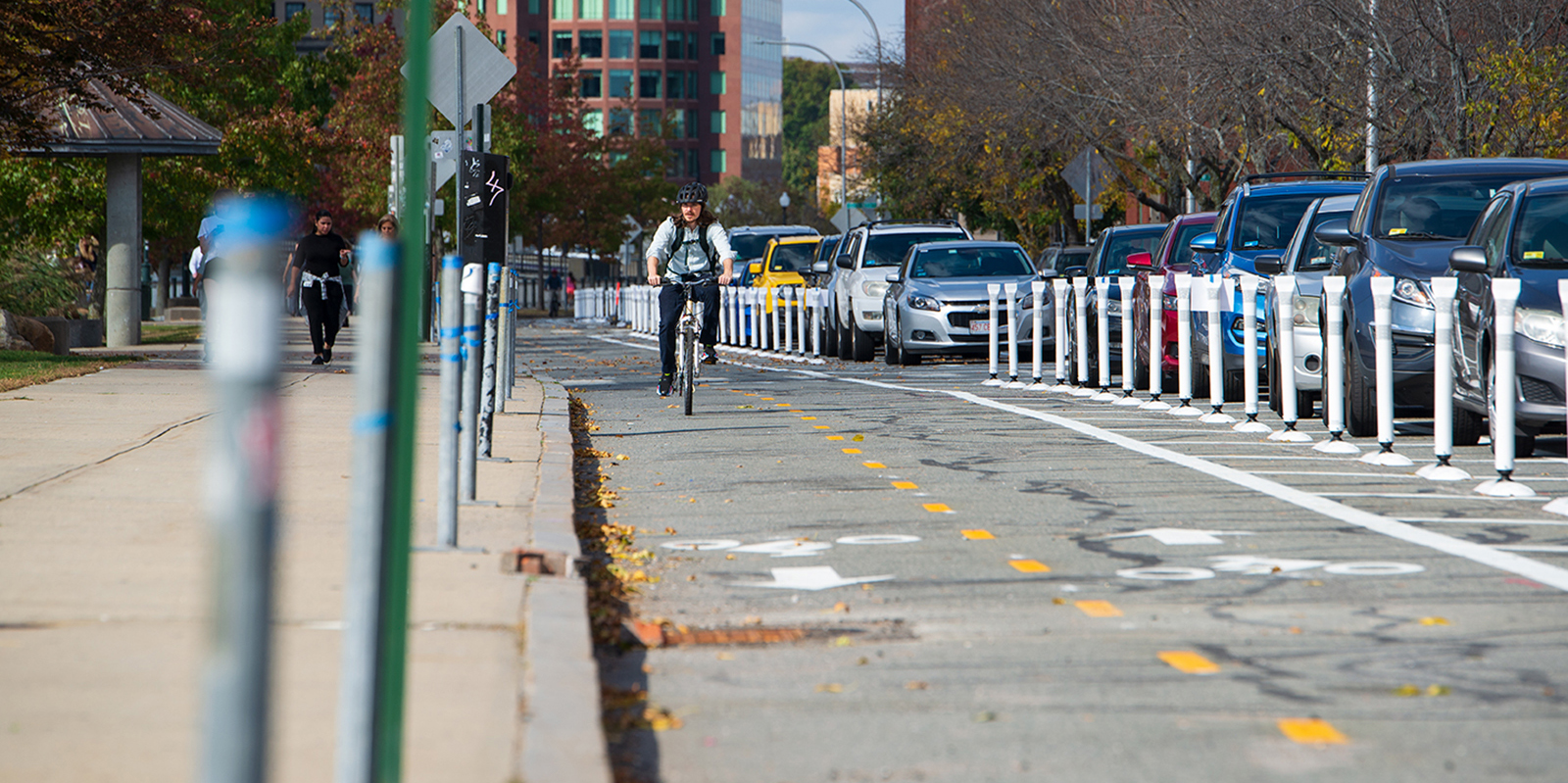Rhode Island’s Latest Gimmick Slogan Isn’t All That
Tax revenue continues to be wasted on tourism overkill when it could be used to help mitigate the climate crisis, improve public transit, and build affordable housing
March 6, 2024
Instead of “Fun Sized,” “Cooler & Warmer,” and “All That” how about “Loves to Waste Money”?
Rhode Island can’t adequately fund public transit, environmental enforcement, and public education — all of which would help make the Ocean State easier to explore, healthier, and smarter — but it has no problem paying advertising firms and marketing companies for corny phrases, a confusing logo, and silly tourism campaigns.
Rhode Island Commerce even commissioned the creation of two Styrofoam quahogs, at the cost of $38,000 apiece, plus whatever it cost to truck the 200-pound stuffies and their accompanying 8-foot-tall bottles of hot sauce from coast to coast.
The unappetizing seafood sculptures (no offense to the artist, because it was an impossible task) featured barcodes encouraging tourists to enter to win a trip to Rhode Island, where they likely presumed we enjoy smashing baked potatoes into seashells and washing it down with hot sauce.
Rhode Island Commerce’s chief marketing officer told WPRI that the stuffies spent nearly three months traveling the country, stopping at four major airports along their adventure. The last stop was in December at Los Angeles International Airport. The stuffies also visited Atlanta, Baltimore, and Detroit.
She also noted that one of the Styrofoam leviathans was paraded around on a glass truck that passed through 10 East Coast cities.

I realize I’m a curmudgeon, but come on. We can’t effectively bus local residents to Ocean State beaches but we can send two giant pieces of Styrofoam on vacation.
The traveling quahogs made the Cooler & Warmer catastrophe look like a brilliant idea. That 2016 marketing failure featured a video that included footage from Iceland. Also, nobody knew or knows what Cooler & Warmer means. That mystery at least made the campaign more interesting than those two petroleum-based stuffies.
Then-Gov. Gina Raimondo tried to explain, tweeting that the motto “is what RI is all about — an enticing, openhearted place to live, work and visit.”
Within days, the Cooler & Warmer backlash forced the resignation of the state’s chief marketing officer. And Raimondo responded by saying the head-scratching slogan would be scrapped but the logo — a white sail — would remain. She encouraged businesses to make the sail theirs by putting their logos in the white space.
That sound you heard was $550,000 in taxpayer money being flushed down the toilet. You heard the same sound when state officials decided last year to swap out Rhode Island’s license plates for no reason.

“Loves to Waste Money” isn’t catchy, but it’s true.
Two years later, Cooler & Warmer was replaced by Fun Sized. This campaign featured people rock climbing and kayaking. State officials claimed the videos were all shot in Rhode Island. This 2018 marketing strategy cost nearly $1 million.
The fun ended this year, as the state recently unveiled a new marketing campaign, All That.
“This new campaign will ensure that travelers know that whatever they are looking for in their next trip, Rhode Island is ‘All That,’” Lt. Gov. Sabina Matos said in a press release announcing the waste of $482,000 in taxpayer money.
All That … traffic because state officials fail to property fund and support public transit. While you are here, make sure to visit Alviti Bridge, where, while stuck in traffic, you can stare at another bridge sticking straight in the air.
The nearly half-million-dollar All That campaign is part of a $2.2 million contract the state signed last June with the Florida-based consulting firm The Zimmerman Agency for advertising work.
The state and its municipalities need funding to: maintain and repair infrastructure (I hear there is a crumbling bridge that is causing more than 10- to 15-minute delays); protect drinking water supplies; better manage stormwater runoff, so our beaches aren’t closed to swimming as often; prepare communities for climate change; modernize the power grid to accommodate more renewable energy; and build more affordable housing, to name just a few other priorities.

A well-run state would be able to address those quality-of-life issues and marketing at the same time. Rhode Island is not such a place. For instance, the state has an appalling lack of affordable housing but Rhode Island Commerce seems more interested in subsidizing luxury living. Lawmakers talk about the need, but then blame a lack of funding. Meanwhile, the crisis worsens and the cost of fixing the problem — if that truly is the aim — only increases.
Rhode Island spends a significant chunk of tax revenue funding regional tourism councils. Perhaps that money could be put to better use. Tourism is obviously important, but so too is properly caring for and addressing the needs of Rhode Islanders. A healthy population and environment would provide a wonderful boost to the economy.
The state’s five regional tourism councils were originally created in the 1980s to drive tourism revenue. They are largely funded by the state’s 6% hotel tax rate — off the top, 1% goes to the municipality where the lodging facility is located. The remaining 5% is distributed thusly: 45% to the local tourism council; 25% to the municipality where the accommodation is located; 25% to Rhode Island Commerce; and 5% to the Providence Warwick Convention & Visitors Bureau.
Discover Newport is the local tourism council for Newport and Bristol counties. It, like the other tourism councils, is essentially a government-supported marketing agency with a sizable budget. For the fiscal year that ended June 30, 2023, Discover Newport reported $5,823,728 in revenue. It reported investing $4.5 million in sales and marketing efforts.
The Discover Newport umbrella also includes the Newport Hotel Collection, authorized by the Newport City Council to get $1 a room per night from sales by City-by-the-Sea hotels with 18 or more rooms. The Collection’s purpose is to increase the use of hotel rooms for its members, and, either directly or indirectly, is behind the push for ever more hotel development. The Collection invested another $211,000 in sales and marketing efforts, according to Discover Newport.
While nearly half of the state’s hotel tax revenue is used to pay tourism council salaries, rent, advertising campaigns, marketing strategies, and consultants and to buy foam monstrosities and stock Icelandic footage, in many of the communities where they are based, such as Newport, municipal resources are strained, low-paid hospitality/service industry workers can’t afford rent, and the proliferation of second homes is jacking up housing costs.
The median listing home price in Newport is $1.5 million. The average Newport home value is $804,730, up 6.2% over the past year. You better be a tourist, because who can afford to live there?
Here are the 2022 revenues reported by the state’s four other tourism councils: Providence Warwick Convention & Visitors Bureau, $4,084,659; South County Tourism Council, $2,008,589; Blackstone Valley Tourism Council, $2.82 million; and the Block Island Tourism Council, $537,785.
There are more important things hotel tax revenues could be used for other than to fund five regional tourism councils, plus a commerce corporation, for a state that is 48 miles long, 37 miles wide, and has only 39 cities and towns — and you have to admit some aren’t high on people’s places to visit even if an airport stuffie forces a double take.
Note: The only two state tourism slogans I can recall are “Virginia is for Lovers” and “Make It In Massachusetts.” Neither worked. I’ve only been to Virginia twice, and I was born and raised in Massachusetts.
Frank Carini can be reached at [email protected]. His opinions don’t reflect those of ecoRI News.




How about “Come for the Turbines and Stay for the Invasives!”
Two thoughts. I have been watching the 15 second LA California ads. The RI ads are nowhere near as good. And thinking of taking better care of our communities, RI has a new Environmental Justice statement, but when we run into clearcut cases of environmental injustice by a loc al government you cannot get the state to lift a finger to help the EJ community stay whole. it is looking very much like empty words
Why is our ad/consulting agency in Florida? I’m sure many local marketing or PR agencies are up to the task.
So many thoughts… Frank, your figures show that the vast bulk of every hotel tax dollar goes right back into promoting more tourism. For sure tourism contributes much to our economy. However, it also add to the congestion and stress on our roads and bridges, many of which are not tolled. It contributes to the weakening and stressors of the Cliff Walk. It adds to the numbers of people on our beaches and hiking trails, no doubt adding trash and contributing to beach erosion. Boating contributes to pollution of our waterways, which certainly affects marine life and shore creatures. Im sure Im leaving out some other big offenses. Listening to the tiresome SOTU Thursday evening, one wonders if anyone in the room noticed that “the Emperor had no clothes on”. An opinion piece in the Bristol Phoenix this week said” if you do what you’ve always done, you’ll always get what youve got. ”
While I agree with a lot about what you are saying and respect the other comments, I worked at one of those Tourism agencies and to regulate them has just trying to bring in tourists to clog up the system is in error.
At Blackstone Valley Tourism Council, we developed environmental educate programs and offered free programming in the city of Central Falls to get students out on the river in kayaks. We work to promote our restaurants and attractions not just for tourists and visitors to the state but also for the communities to support economic development. What you may not know is that the Blackstone River Watershed Council began as an offshoot of the tourism council, they also worked with a grant from Keep America Beautiful to begin Keep Blackstone Valley Beautiful that has diligently worked to expand environmental education programs in recycling and litter not only in the valley, but statewide. The Blackstone Valley Tourism Council was also a major partner behind the development Blackstone Valley Bike Path.
While it may seem the regional tourism offices are just about bringing visitors to the states, that is just one component. Perhaps, you should look deeper into what happens at community level within each of these regions before passing judgement because of poor marketing choices at the state level.
I am now retired from BVTC and would be the first to admit that sometimes it was not perfect, and some decisions made at the top may have not been in the best interest of community, but over 300,000 children have learned about the river because of those education programs supported by community grants to make them free to urban students. So perhaps it is All That!
5 regional tourism departments in a state as small as Rhode Island? Crazy. I’d suggest taking that money and spending in crews to clean up all the litter I witnessed yesterday along routes 95 and 295 to actually achieve “Clean Rhodes.”
The only marketing slogan that I have heard in my 74 years that worked was:
Rhode Island the Biggest Little State in the Union.”
I had some T-shirts with that emblazoned on the front that I would wear when I was out of State. Had so many people asking me about Rhode Island that it made me proud of my state. I was more than happy to answer their question about Rhode Island. I’d make recommendations on where to visit where to shop and eat.
That slogan made me proud to be a Rhode Islanders.